Leader of the Conservative Party (UK)
 From Wikipedia - Reading time: 18 min
From Wikipedia - Reading time: 18 min
| Leader of the Conservative and Unionist Party | |
|---|---|
Logo for the Conservative Party | |
since 2 November 2024 | |
| Type | Party leader |
| Status | Chief executive officer |
| Inaugural holder | Robert Peel (de facto) Bonar Law (de jure) |
| Formation | 1834 (de facto) 1922 (de jure) |
The leader of the Conservative Party (officially the leader of the Conservative and Unionist Party) is the highest position within the United Kingdom's Conservative Party. The current holder of the position is Kemi Badenoch, who was elected to the position on 2 November 2024, following her victory against Robert Jenrick in the party's leadership election.[1]
From the party's formation in 1834 until 1922, the leader of the Conservative Party was not a formal position; instead, there was a party leader in each chamber of Parliament, and they were considered equal unless one took precedence over the other, such as when one was serving as prime minister. Following the passage of the Parliament Act 1911, the reduction of power in the House of Lords suggested that the Conservative leader in the House of Commons would be preeminent, but this fact was not formalised until 1922.
Since 1922, a leader of the Conservative Party has been formally elected, even when the party is in opposition. Originally, the party leader was appointed opaquely by other high-ranking members of the party. This process was gradually democratised in the late 20th century; in 1965, the appointment was linked to a vote by party MPs, and in 1998, the process was opened to all party members to decide between the last two candidates selected by parliamentarians.[2][3] Under the party's rules, a member can vote in its leadership elections even if they are not a British citizen, do not reside in the UK, and do not have the right to vote in British elections.[4][5]
When the Conservative Party is in opposition, as it currently is, the leader of the Conservative Party usually acts (as the second-largest party) as the Leader of the Opposition, and chairs the shadow cabinet. Concordantly, when the party is in government, the leader would usually become Prime Minister of the United Kingdom, First Lord of the Treasury, Minister for the Civil Service and Minister for the Union, as well as appointing the Cabinet. Four of the party's leaders have been women: Margaret Thatcher, Theresa May, Liz Truss and Kemi Badenoch, all of whom, except Badenoch, have served as prime minister. Rishi Sunak is the first British Indian party leader and prime minister.[6] The only Conservative leaders not to contest a general election (excluding temporary acting leaders) are Iain Duncan Smith and Truss (both of whom resigned before an election was called).
Selection process
[edit]Under the party's constitution,[2] leaders are elected by serving MPs and party members whose membership started at least three months prior to the closing of a ballot. Candidates must be serving MPs. A former leader who has resigned may not stand in the contest triggered by their departure.
Those who wish to stand must notify the 1922 Committee, a body representing backbench Conservative Party MPs, which has broad powers to set the rules of the leadership race (e.g. the minimum number of nominees candidates need).
The party's practice is for MPs to eliminate candidates through multiple rounds of voting until two remain, from whom the winner is then chosen by a ballot of party members.
The 1922 Committee's chairman acts as the returning officer for all stages of the leadership election process.
Overall leaders of the party (1834–1922)
[edit]| Overall leader (birth–death)
|
Portrait | Constituency or title | Took office | Left office | Government | |||
|---|---|---|---|---|---|---|---|---|
| Party | Prime Minister | Term | ||||||
| Sir Robert Peel (1788–1850)
|

|
Tamworth | 18 December 1834[a] | 29 June 1846 | Con | himself | 1834–35 | |
| Whig | Melbourne | 1835–41 | ||||||
| Con | himself | 1841–46 | ||||||
| Edward Smith-Stanley (1799–1869)
|

|
Baron Stanley (1846–1851)
|
29 June 1846 | 27 February 1868 | Whig | Russell | 1846–52 | |
| 14th Earl of Derby (1851–1868)
|
Con | himself | 1852 | |||||
| Peel | Aberdeen | 1852–55 | ||||||
| Whig | Palmerston | 1855–58 | ||||||
| Con | himself | 1858–59 | ||||||
| Lib | Palmerston | 1859–65 | ||||||
| Lib | Russell | 1865–66 | ||||||
| Con | himself | 1866–68 | ||||||
| Benjamin Disraeli (1804–1881)
|

|
Buckinghamshire (1868–1876)
|
27 February 1868 | 19 April 1881[b] | Con | himself | 1868 | |
| Lib | Gladstone | 1868–74 | ||||||
| Con | himself | 1874–80 | ||||||
| 1st Earl of Beaconsfield (1876–1881)
|
Lib | Gladstone | 1880–85 | |||||
| vacant |
|
19 April 1881 | 23 June 1885 | |||||
| Robert Gascoyne-Cecil (1830–1903)
|

|
3rd Marquess of Salisbury | 23 June 1885 | 11 July 1902 | Con | himself | 1885–86 | |
| Lib | Gladstone | 1886 | ||||||
| Con | himself | 1886–92 | ||||||
| Lib | Gladstone | 1892–94 | ||||||
| Lib | Rosebery | 1894–95 | ||||||
| Con | himself | 1895–1902 | ||||||
| Arthur Balfour (1848–1930)
|

|
Manchester East (1902–1906)
|
11 July 1902 | 13 November 1911 | Con | himself | 1902–05 | |
| City of London (1906–1911)
|
Lib | C.-Bannerman | 1905–08 | |||||
| Lib | Asquith | 1908–16 | ||||||
| vacant |
|
13 November 1911 | 10 December 1916[c] | |||||
| Lib | Lloyd George | 1916–22 | ||||||
| Andrew Bonar Law (1858–1923)
|

|
Bootle (1916–1918)
|
10 December 1916[c] | 21 March 1921 | ||||
| Glasgow Central (1918–1921)
| ||||||||
| vacant |
|
21 March 1921 | 23 October 1922 [c] | |||||
Leaders of the party (1922–present)
[edit]| Leader (birth–death) |
Portrait | Constituency or title | Took office | Left office | Government | |||
|---|---|---|---|---|---|---|---|---|
| Party | Prime Minister | Term | ||||||
| Andrew Bonar Law (1858–1923)
|

|
Glasgow Central | 23 October 1922 | 28 May 1923 | Con | himself | 1922–23 | |
| Stanley Baldwin (1867–1947)
|

|
Bewdley | 28 May 1923 (Party meeting)
|
31 May 1937 | Con | himself | 1923–24 | |
| Lab | MacDonald | 1924 | ||||||
| Con | himself | 1924–29 | ||||||
| Lab | MacDonald | 1929–35 | ||||||
| NLab | ||||||||
| Con | himself | 1935–37 | ||||||
| Neville Chamberlain (1869–1940)
|

|
Birmingham Edgbaston | 31 May 1937 (Party meeting)
|
9 October 1940 | Con | himself | 1937–40 | |
| Churchill | 1940 | |||||||
| Winston Churchill (1874–1965)
|
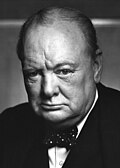
|
Epping (1940–1945)
|
9 October 1940 (Party meeting)
|
21 April 1955 | Con | himself | 1940–45 | |
| Woodford (1945–1955)
|
Lab | Attlee | 1945–51 | |||||
| Con | himself | 1951–55 | ||||||
| Anthony Eden (1897–1977)
|

|
Warwick and Leamington | 21 April 1955 (Party meeting)
|
22 January 1957 | Con | himself | 1955–57 | |
| Harold Macmillan (1894–1986)
|
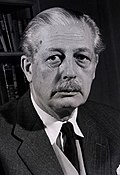
|
Bromley | 22 January 1957 (Party meeting)
|
11 November 1963 | Con | himself | 1957–63 | |
| Alec Douglas-Home (1903–1995)
|

|
Earl of Home (1963)
|
11 November 1963 (Party meeting)
|
27 July 1965 | Con | himself | 1963–64 | |
| Kinross and Western Perthshire (1963–1965)
| ||||||||
| Lab | Wilson | 1964–70 | ||||||
| Edward Heath (1916–2005)
|
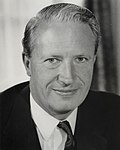
|
Bexley (1965 – 1974)
|
27 July 1965 (Elected)
|
11 February 1975 | ||||
| Con | himself | 1970–74 | ||||||
| Sidcup (1974–1975)
| ||||||||
| Lab | Wilson | 1974–76 | ||||||
| Margaret Thatcher (1925–2013)
|

|
Finchley | 11 February 1975 (Elected)
|
27 November 1990 | ||||
| Lab | Callaghan | 1976–79 | ||||||
| Con | herself | 1979–90 | ||||||
| John Major (b. 1943)
|

|
Huntingdon | 27 November 1990 | 19 June 1997 | ||||
| Con | himself | 1990–97 | ||||||
| Lab | Blair | 1997–2007 | ||||||
| William Hague (b. 1961)
|

|
Richmond (Yorks) | 19 June 1997 (Elected)
|
13 September 2001 | ||||
| Iain Duncan Smith (b. 1954)
|
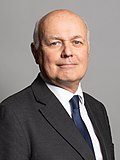
|
Chingford and Woodford Green | 13 September 2001 (Elected)
|
6 November 2003 | ||||
| Michael Howard (b. 1941)
|

|
Folkestone and Hythe | 6 November 2003 | 7 October 2005[7] | ||||
| David Cameron (b. 1966)
|
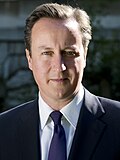
|
Witney | 6 December 2005 (Elected)
|
11 July 2016 | ||||
| Lab | Brown | 2007–10 | ||||||
| Coal | himself | 2010–15 | ||||||
| Con | 2015–16 | |||||||
| Theresa May (b. 1956)
|

|
Maidenhead | 11 July 2016 | 7 June 2019 | Con | herself | 2016–19 | |
7 June 2019 (Acting)
|
23 July 2019
| |||||||
| Boris Johnson (b. 1964)
|
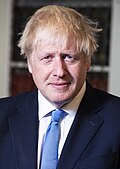
|
Uxbridge and South Ruislip | 23 July 2019 (Elected)
|
5 September 2022 | Con | himself | 2019–22 | |
| Liz Truss (b. 1975)
|

|
South West Norfolk | 5 September 2022 (Elected)
|
24 October 2022 | Con | herself | 2022 | |
| Rishi Sunak (b. 1980)
|
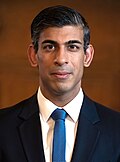
|
Richmond (Yorks) (2015–2024) |
24 October 2022 | 24 July 2024 | Con | himself | 2022–24 | |
| Richmond and Northallerton (2024) |
24 July 2024 (Acting)
|
2 November 2024
|
Lab | Starmer | 2024–present | |||
| Kemi Badenoch (b. 1980)
|

|
North West Essex | 2 November 2024 (Elected)
|
Incumbent | ||||
Timeline
[edit]
Houses of Lords and Commons leaders
[edit]This section needs additional citations for verification. (December 2017) |
Leaders in the House of Lords (1834–present)
[edit]Those asterisked were considered the overall leader of the party.
- The Duke of Wellington: 1834–1846
- Lord Stanley (14th Earl of Derby from 1851): 9 March 1846 – 27 February 1868*, elected at a party meeting ()
- The Earl of Malmesbury: 1868–1869, appointed by Prime Minister Disraeli
- The Lord Cairns: 1869–1870, elected at a party meeting ()
| Portrait | Leader | Term of office | LOTO | Other ministerial offices held as Leader of the House of Lords | |
|---|---|---|---|---|---|

|
The Duke of Richmond and Lennox | 26 February 1870 |
21 August 1876 |
1870–1874 | – Lord President of the Council (21 February 1874 – 28 April 1880) |

|
The Earl of Beaconsfield* | 21 August 1876 |
19 April 1881 |
1880–1881 | – Prime Minister (20 February 1874 – 21 April 1880) – Lord Keeper of the Privy Seal (12 August 1876 – 4 February 1878) |

|
The Marquess of Salisbury* | 9 May 1881 |
12 July 1902 |
1881–1885 1886 1892–1895 |
– Prime Minister (23 June 1885 – 28 January 1886) – Foreign Secretary (24 June 1885 – 6 February 1886) – Prime Minister (25 July 1886 – 11 August 1892) – Foreign Secretary (14 January 1887 – 11 August 1892) – Prime Minister (25 June 1895 – 11 July 1902) – Foreign Secretary (29 June 1895 – 12 November 1900) – Lord Keeper of the Privy Seal (12 November 1900 – 11 July 1902) |

|
The Duke of Devonshire | 12 July 1902 |
10 October 1903 |
– Lord President of the Council (29 June 1895 – 19 October 1903) – President of the Board of Education (3 March 1900 – 8 August 1902) | |

|
The Marquess of Lansdowne | 10 October 1903 |
10 December 1916 |
1905–1915 | – Foreign Secretary (12 November 1900 – 4 December 1905) – Minister without Portfolio (25 May 1915 – 10 December 1916) |

|
The Earl Curzon of Kedleston (1st Marquess Curzon of Kedleston from 1921) |
10 December 1916 |
20 March 1925 |
1924 | – President of the Air Board (15 May 1916 – 3 January 1917) – Lord President of the Council (10 December 1916 – 23 October 1919) – Foreign Secretary (23 October 1919 – 22 January 1924) – Lord President of the Council (3 November 1924 – 20 March 1925) |

|
The Marquess of Salisbury | 27 April 1925 |
17 June 1931 |
1929–1931 | – Lord Keeper of the Privy Seal (6 November 1924 – 4 June 1929) |
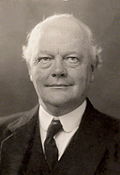
|
The Viscount Hailsham | 17 June 1931 |
7 June 1935 |
1931 | – War Secretary (5 November 1931 – 7 June 1935) |

|
The Marquess of Londonderry | 7 June 1935 |
22 November 1935 |
– Lord Keeper of the Privy Seal | |

|
The Viscount Halifax | 22 November 1935 |
21 February 1938 |
– Lord Keeper of the Privy Seal (22 November 1935 – 28 May 1937) – Lord President of the Council (22 May 1937 – 9 March 1938) | |

|
The Earl Stanhope | 21 February 1938 |
14 May 1940 |
– President of the Board of Education (28 May 1937 – 27 October 1938) – First Lord of the Admiralty (27 October 1938 – 3 September 1939) – Lord President of the Council (3 September 1939 – 10 May 1940) | |

|
The Viscount Caldecot | 14 May 1940 |
3 October 1940 |
– Dominions Secretary | |

|
The Viscount Halifax | 3 October 1940 |
22 December 1940 |
– Foreign Secretary (21 February 1938 – 22 December 1940) | |
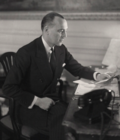
|
The Lord Lloyd | 22 December 1940 |
8 February 1941 |
– Colonial Secretary (12 May 1940 – 4 February 1941) | |
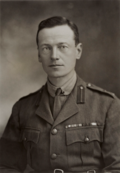
|
The Lord Moyne | 8 February 1941 |
22 February 1942 |
– Colonial Secretary | |

|
Viscount Cranborne (5th Marquess of Salisbury from 1947) |
21 February 1942 |
29 March 1957 |
1945–1951 | – Lord Keeper of the Privy Seal (21 February 1942 – 24 September 1943) – Colonial Secretary (21 February 1942 – 22 November 1942) – Dominions Secretary (24 September 1943 – 26 July 1945) – Lord Keeper of the Privy Seal (28 October 1951 – 7 May 1952) – Commonwealth Relations Secretary (12 March 1952 – 24 November 1952) – Lord President of the Council (25 November 1952 – 29 March 1957) |

|
The Earl of Home | 29 March 1957 |
27 July 1960 |
– Commonwealth Relations Secretary (7 April 1955 – 27 July 1960) – Lord President of the Council (until 17 September 1957, from 14 October 1959) | |
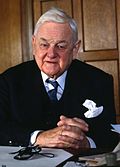
|
The Viscount Hailsham | 27 July 1960 |
20 October 1963 |
– Lord President of the Council – Minister for Science (14 October 1959 – 20 October 1963) | |
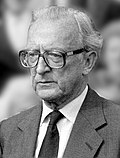
|
The Lord Carrington | 20 October 1963 |
20 June 1970 |
1964–1970 | – Minister without Portfolio (20 October 1963 – 16 October 1964) |
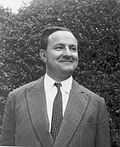
|
The Earl Jellicoe | 20 June 1970 |
23 May 1973 |
– Lord Keeper of the Privy Seal | |
| The Lord Windlesham | 23 May 1973 |
4 March 1974 |
– Lord Keeper of the Privy Seal | ||

|
The Lord Carrington | 4 March 1974 |
4 May 1979 |
1974–1979 | – |

|
The Lord Soames | 5 May 1979 |
14 September 1981 |
– Lord President of the Council | |
| The Baroness Young | 14 September 1981 |
11 June 1983 |
– Chancellor of the Duchy of Lancaster (14 September 1981 – 7 April 1982) – Lord Keeper of the Privy Seal (7 April 1982 – 11 June 1983) | ||
| The Viscount Whitelaw | 11 June 1983 |
10 January 1988 |
– Lord President of the Council | ||
| The Lord Belstead | 10 January 1988 |
28 November 1990 |
– Lord Keeper of the Privy Seal | ||
| The Lord Waddington | 28 November 1990 |
11 April 1992 |
– Lord Keeper of the Privy Seal | ||

|
The Lord Wakeham | 11 April 1992 |
20 July 1994 |
– Lord Keeper of the Privy Seal | |

|
Viscount Cranborne (7th Marquess of Salisbury from 2003) |
20 July 1994 |
3 December 1998 |
1997–1998 | – Lord Keeper of the Privy Seal (20 July 1994 – 2 May 1997) |
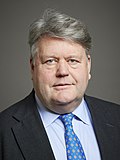
|
The Lord Strathclyde | 3 December 1998 |
7 January 2013 |
1998–2010 | – Chancellor of the Duchy of Lancaster (12 May 2010 – 7 January 2013) |

|
The Lord Hill of Oareford | 7 January 2013 |
15 July 2014 |
– Chancellor of the Duchy of Lancaster | |
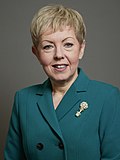
|
The Baroness Stowell of Beeston | 15 July 2014 |
14 July 2016 |
– Lord Keeper of the Privy Seal | |

|
The Baroness Evans of Bowes Park | 14 July 2016 |
6 September 2022 |
– Lord Keeper of the Privy Seal | |

|
The Lord True | 6 September 2022 |
Incumbent | – Lord Keeper of the Privy Seal | |
Leaders in the House of Commons (1834–1922)
[edit]Those asterisked were considered the overall leader of the party.
- Sir Robert Peel: 18 December 1834[a] – 1846*
- Lord George Bentinck: 1846–1847
- The Marquess of Granby: 9 February 1848 – 4 March 1848, elected at a party meeting ()
- None: 1848–1849
- Jointly Benjamin Disraeli, the Marquess of Granby, and John Charles Herries: 1849–1852,[d] elected at a party meeting ()
- Benjamin Disraeli: 1852 – 21 August 1876 (overall leader from 27 February 1868)
- Sir Stafford Northcote: 21 August 1876 – 24 June 1885, appointed by Prime Minister Beaconsfield
- Sir Michael Hicks Beach: 24 June 1885 – 3 August 1886, appointed by Prime Minister Salisbury
- Lord Randolph Churchill: 3 August 1886 – 14 January 1887, appointed by Prime Minister Salisbury
- William Henry Smith: 17 January 1887 – 6 October 1891, appointed by Prime Minister Salisbury
- Arthur Balfour: 1891 – 13 January 1906,[e] appointed by Prime Minister Salisbury (overall leader from 1902)
- Joseph Chamberlain: 1906
- Arthur Balfour: 1906 – 13 November 1911*
- Bonar Law: 13 November 1911 – 21 March 1921, elected at a party meeting () (overall leader from 1916)
- Austen Chamberlain: 21 March 1921 – 23 October 1922, elected at a party meeting ()
Elections of Conservative leaders by party meeting
[edit]House of Commons
[edit]| # | Date of meeting | Name of leader elected | Category attending meeting | Location of meeting | Chair | Proposer | Seconder | Refs |
|---|---|---|---|---|---|---|---|---|
| 1 | 9 February 1848 | The Marquess of Granby | Protectionist commoners | Residence of George Bankes | — | — | — | [9] [10] |
| 2 | 1 February 1849 | Benjamin Disraeli | — | Residence of the Lord Stanley of Bickerstaffe | — | — | — | [11] |
| The Marquess of Granby | ||||||||
| John Charles Herries | ||||||||
| 3 | 13 November 1911 | Bonar Law | Unionist Members of Parliament | Carlton Club, Pall Mall | Henry Chaplin, senior Privy Councillor on the Unionist benches (appointed 1885) | Walter Long | Austen Chamberlain | [12] |
| 4 | 21 March 1921 | Austen Chamberlain | Unionist Members of Parliament | Carlton Club, Pall Mall | Lord Edmund Talbot, Conservative Chief Whip | Captain Ernest George Pretyman | Sir Edward Coates: "a back bencher and one of the rank and file" | [13] |
| 5 | 23 October 1922 | Bonar Law | Unionist peers, MPs, and candidates | Hotel Cecil, The Strand | The Marquess Curzon of Kedleston, Leader of the House of Lords | The Marquess Curzon of Kedleston | Stanley Baldwin: "chosen ... to be the spokesman for the House of Commons" | [14] |
| 6 | 28 May 1923 | Stanley Baldwin | "Conservative Party" | Hotel Cecil, The Strand | The Marquess Curzon of Kedleston, Leader of the House of Lords | The Earl of Derby | Captain Ernest George Pretyman: "a member of the House of Commons who [had] been a colleague in that House of Mr Bonar Law for something over 25 years" | [15] |
| 7 | 31 May 1937 | Neville Chamberlain | "peers and MPs who receive the Conservative whip, ... prospective candidates who have been adopted by constituency associations, and ... members of the executive committee of the National Union of Conservative and Unionist associations from England and Wales, Scotland and Northern Ireland." | Caxton Hall, Caxton Street | The Viscount Halifax, Leader of the House of Lords | The Earl of Derby | Winston Churchill (Privy Councillor since 1907) | [16] |
| 8 | 9 October 1940 | Winston Churchill | "Peers and MPs who receive the Conservative whip, ... prospective candidates who have been adopted by constituency associations, and ... members of the Executive Committee of the National Union of Conservative and Unionist Associations from England and Wales, Scotland and Northern Ireland." | London | The Viscount Halifax, Leader of the House of Lords | The Viscount Halifax | Sir George Courthope: "one of the senior back benchers of the party" | [17] |
| 9 | 21 April 1955 | Sir Anthony Eden | "Conservative and National Liberal members of the two Houses of Parliament, Conservative and National Liberal parliamentary candidates and members of the executive committee of the National Union of Conservative and Unionist Associations" | Church House, Dean's Yard, Westminster | The Marquess of Salisbury, Leader of the House of Lords | The Marquess of Salisbury | Rab Butler (Privy Councillor since 1939) | [18] |
| 10 | 22 January 1957 | Harold Macmillan | "Conservative and Unionist members of the House of Lords and the House of Commons, ... prospective parliamentary candidates and ... members of the executive committee of the National Union of Conservative and Unionist Associations. National Liberal members of both Houses of Parliament and adopted prospective candidates were also present" | — | The Marquess of Salisbury, Leader of the House of Lords | The Marquess of Salisbury | Rab Butler (Privy Councillor since 1939) | [19] |
| 11 | 11 November 1963 | Sir Alec Douglas-Home | "members of both Houses of Parliament taking the Conservative whip, prospective candidates who [had] been adopted by constituency associations, members of the executive of the mass party, and National Liberal MPs and adopted prospective candidates" | Church House, Dean's Yard, Westminster | The Lord Carrington, Leader of the House of Lords | The Lord Carrington | Geoffrey Lloyd: "the senior Conservative Privy Councillor in the Commons next in line to Sir Winston Churchill" (appointed 1943) | [20] |
House of Lords
[edit]| # | Date of meeting | Name of leader elected | Category attending meeting | Location of meeting | Chair | Proposer | Seconder | Notes |
|---|---|---|---|---|---|---|---|---|
| 1 | 9 March 1846 | The Lord Stanley of Bickerstaffe | Peers | Residence of the Duke of Richmond | The Earl of Eglinton | — | — | [21] |
| 2 | 15 February 1869 | The Earl Cairns | 23 peers | — | The Earl of Malmesbury | The Earl of Malmesbury | — | [22] |
| 3 | 26 February 1870 | The Duke of Richmond | Peers | Carlton Club | — | The Marquess of Salisbury | The Earl of Derby | [23] |
| 4 | 9 May 1881 | The Marquess of Salisbury | Conservative members of the House of Lords | Residence of the Marquess of Abergavenny | The Marquess of Abergavenny | The Duke of Richmond | The Earl Cairns | [24] |
Deputy Leaders of the Conservative Party
[edit]Deputy Leader of the Conservative Party is sometimes an official title of a senior Conservative politician of the United Kingdom.
Some are given this title officially by the party, such as Peter Lilley,[25] while others are given the title as an unofficial description by the media, such as William Hague.[26] The first politician to hold the office as such was Reginald Maudling, appointed by Edward Heath in 1965.[27] Distinct from being "second-in-command", there is formally no current position of deputy party leader in the party's hierarchy.[28]
The term has sometimes been mistakenly used to refer to the party's deputy chair.[29]
List of deputy leaders
[edit]| Name | Term began | Term ended | Concurrent office(s) | Leader |
|---|---|---|---|---|
| Reginald Maudling | 4 August 1965[30] | 18 July 1972[31] | Deputy Leader of the Opposition (1965–1970)[32] Shadow Foreign Secretary (1965) Shadow Defence Secretary (1968–1969) Home Secretary (1970–1972) |
Edward Heath |
| Not in use from 1972 to 1975 | ||||
| The Viscount Whitelaw | 12 February 1975[33] | 7 August 1991[34] | Deputy Leader of the Opposition (1975–1979)[35] Shadow Home Secretary (1976–1979) Home Secretary (1979–1983) Leader of the House of Lords (1983–1988)[36] |
Margaret Thatcher |
| John Major | ||||
| Not in use from 1991 to 1998 | ||||
| Peter Lilley | 2 June 1998[37] | 15 June 1999[37] | Deputy Leader of the Opposition (1998–1999)[38] | William Hague |
| Not in use from 1999 to 2001 | ||||
| Michael Ancram | 18 September 2001[39] | 6 December 2005[39] | Deputy Leader of the Opposition (2001–2005)[40] Shadow Foreign Secretary (2001–2005)[39] Shadow Defence Secretary (2005)[39] |
Iain Duncan Smith |
| Michael Howard | ||||
| Not in use since 2005 | ||||
See also
[edit]Notes
[edit]- ^ a b Date of the Tamworth Manifesto.
- ^ Died in office
- ^ a b c Date on which Law became Leader of the House of Commons.
- ^ Granby resigned "either in the end of December [1851] or on one of the first days of January [1852]".[8]
- ^ Date on which Balfour failed to be elected in Manchester East.
References
[edit]- ^ "Tory leadership election live: Kemi Badenoch and Robert Jenrick await final results". The Guardian. 2 November 2024. Retrieved 2 November 2024.
- ^ a b "Constitution of the Conservative Party" (PDF). January 2021. Archived (PDF) from the original on 20 September 2021.
- ^ Alexandre-Collier, Agnès (1 November 2018). "Brexit reveals the fractures of the British Conservatives". Le Monde diplomatique (in French). Retrieved 5 September 2022.
- ^ Nevett, Joshua (12 August 2022). "Tory leadership election: Meet the overseas voters picking the next PM". BBC News.
- ^ Smith, Hannah (10 August 2022). "Who can vote in the Conservative leadership contest?".
- ^ "Rishi Sunak: A quick guide to the UK's new prime minister". BBC News. 24 October 2022. Retrieved 27 October 2022.
- ^ Johnston, Neil (5 September 2022). "Leadership elections: Conservative Party" (PDF). House of Commons Library (UK). Retrieved 14 September 2022.
- ^ Monypenny, William Flavelle; Buckle, George Earle (1914). The life of Benjamin Disraeli, earl of Beaconsfield, Volume III. New York: The Macmillan Company. pp. 312–3.
- ^ "A Cabinet Council was held at half-past 2 o'clock." Times [London, England] 10 Feb. 1848: 4. The Times Digital Archive. Web. 25 July 2014.
- ^ Malmesbury, The Right Hon. [James Howard Harris,] the [3rd] Earl of (1885). Memoirs of an Ex-Minister. London: Longmans, Green, and Co. pp. 151–2.
{{cite book}}: CS1 maint: multiple names: authors list (link) CS1 maint: numeric names: authors list (link) - ^ Monypenny, William Flavelle; Buckle, George Earle (1914). The life of Benjamin Disraeli, earl of Beaconsfield, Volume III. New York: The Macmillan Company. pp. 138–9.
- ^ "The Unionist Leadership." Times [London, England] 14 Nov. 1911: 9. The Times Digital Archive. Web. 19 July 2014.
- ^ "Unionist M.P.s' New Leader." Times [London, England] 22 Mar. 1921: 12. The Times Digital Archive. Web. 19 July 2014.
- ^ "Unionists Elect Mr. Bonar Law." Times [London, England] 24 Oct. 1922: 18. The Times Digital Archive. Web. 25 July 2014.
- ^ "Conservative Leader." Times [London, England] 29 May 1923: 19. The Times Digital Archive. Web. 19 July 2014.
- ^ "The New Leader And The Old." Times [London, England] 1 June 1937: 17+. The Times Digital Archive. Web. 19 July 2014.
- ^ "Conservative Leader." Times [London, England] 10 Oct. 1940: 2. The Times Digital Archive. Web. 19 July 2014.
- ^ Our Political Correspondent. "Sir A. Eden as Leader." Times [London, England] 22 Apr. 1955: 12. The Times Digital Archive. Web. 19 July 2014.
- ^ "Mr. Macmillan states Party philosophy". The Times. London. 23 January 1957.
- ^ "Prime Minister is Ageless". The Times. London. 12 November 1963. p. 12.
- ^ Malmesbury, The Right Hon. [James Howard Harris,] the [3rd] Earl of (1885). Memoirs of an Ex-Minister. London: Longmans, Green, and Co. p. 124.
{{cite book}}: CS1 maint: multiple names: authors list (link) CS1 maint: numeric names: authors list (link) - ^ Malmesbury, The Right Hon. [James Howard Harris,] the [3rd] Earl of (1885). Memoirs of an Ex-Minister. London: Longmans, Green, and Co. p. 645.
{{cite book}}: CS1 maint: multiple names: authors list (link) CS1 maint: numeric names: authors list (link) - ^ "We are enabled to state that, in compliance with." Times [London, England] 28 Feb. 1870: 9. The Times Digital Archive. Web. 26 July 2014.
- ^ "Meeting Of The Conservative Peers." Times [London, England] 10 May 1881: 10. The Times Digital Archive. Web. 25 July 2014.
- ^ "Peter Lilley, Member of Parliament for Hitchin and Harpenden". The Conservative Party. Archived from the original on 6 August 2016. Retrieved 17 July 2016.
He stood for the Conservative Leadership in 1997; becoming Shadow Chancellor then Deputy Leader of the Conservative Party Responsible for Policy Renewal until 2000.
- ^ Andrew Porter (14 January 2009). "David Cameron anoints William Hague as his deputy". The Telegraph. Retrieved 17 July 2016.
- ^ Blake, Robert (14 August 1965). "A Watershed in English Politics". The Illustrated London News. Vol. 247. p. 20.
The most striking feature, however, of Mr. Heath's reconstruction is the appointment of a Deputy Leader. This is the first time that such a position has been created in the Conservative hierarchy [...]
- ^ Guardian editorial (17 June 2015). "The Guardian view on party deputy leaders: a job about nothing". The Guardian. Retrieved 17 July 2016.
- ^ Ann Gripper (11 May 2015). "David Cameron's 2015 cabinet: Meet the ministers appointed in all Conservative post-election reshuffle". Daily Mirror. Retrieved 17 July 2016.
Robert Halfon will become deputy leader of the Conservative Party.
- ^ Ball, Stuart (1998). The Conservative Party Since 1945. Manchester: Manchester University Press. p. 187.
- ^ "Heath Faces Cabinet Reshuffle". 24 July 1972. Retrieved 3 July 2019.
- ^ Wood, J. R. T. (24 December 1966). A Matter of Weeks Rather Than Months: The Impasse between Harold Wilson and Ian Smith. ISBN 9781466934092. Retrieved 3 July 2019.
- ^ Report on World Affairs. Vol. 56. Commonwealth Parliamentary Association. 1975. p. 71.
- ^ "Willie Whitelaw dies aged 81". The Guardian. Press Association. 1 July 1991. Retrieved 28 June 2017.
- ^ Young, Hugo (18 November 2008). The Hugo Young Papers: Thirty Years of British Politics – Off the Record. ISBN 9780141903606. Retrieved 3 July 2019.
- ^ "Thatcher's No. 2 Cabinet minister resigns". Upi.com. 10 January 1988. Retrieved 3 July 2019.
- ^ a b "Parliamentary career for Lord Lilley". parliament.uk. Retrieved 15 May 2021.
- ^ Mark D'Arcy. "Democracy Live – Peter Lilley MP". BBC News. Retrieved 3 July 2019.
- ^ a b c d "Parliamentary career for The Marquess of Lothian". parliament.uk. Retrieved 15 May 2021.
- ^ "Peerage for the Rt Hon Michael Ancram". Gov.uk. 21 October 2010. Retrieved 3 July 2019.
 KSF
KSF